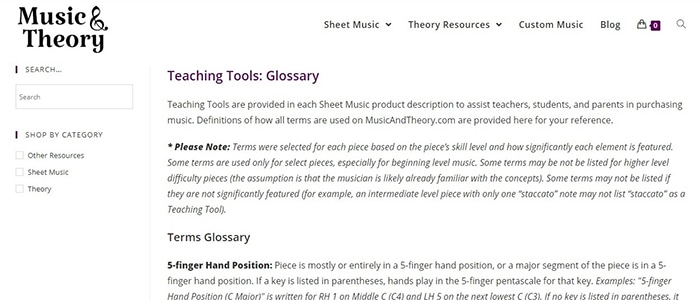Piano Sheet Music Teaching Tools
When making a purchase, it's best to know as much as you can about the item before purchasing. The more information you have, the easier it is to decide whether this item is really for you.
However, when it comes to purchasing piano music online, it's not often easy make an informed decision.
Can You Really Make an Informed Purchase Buying Sheet Music Online?
As musicians and music teachers, we used to be able to go to a local music store and browse through sheet music to our hearts' content before purchasing. But this is becoming less and less the norm. Just this morning I saw a post in a social media group of over twenty thousand piano teachers about how many local music stores are no longer even stocking sheet music at all -- it's all online!
As online shopping becomes increasingly popular, online stores are now selling piano sheet music. It's highly convenient - purchase, download, and print right from your home! However, excessive online music theft and copyright violations have forced online shops to limit what you can see before purchasing.
No longer can you flip through the pages of a book to see if it's what you want. You now have to make an educated guess based on the sample pages and audio preview, and usually either or both are limited (or not even included!).
How many times have you bought piano sheet music online based on the page 1 preview, but after you've paid for it you see page 3 and realize it won't work for your needs?
Have you ever bought a piano book online because it had "Piece A" in it, and you could only preview "Piece B", but since Piece B looked good you were hoping Piece A would also be good...and sadly, it wasn't?
This is exactly why consumers often hesitate to purchase piano sheet music online!
Teaching Tools - What Does this Piano Music Teach?
As a composer and arranger, I'm as eager to protect my music from theft as all the other companies. However, I'm just as eager to ensure that you know what you are purchasing! My hope is that you will buy my music because it is exactly what you're looking for.
Therefore, in addition to providing page previews and audio samples for every single listing on this site, I also list the Teaching Tools for each item.
An additional tip I also include is the largest interval so that you know what size handspan is required to play this piece. (There are many small-handed pianists out there of all ages!)
What are the Teaching Tools?
All music has something to teach you. That's the beauty of music and why we can still learn from it even after decades of study. Knowing what a certain piece has to teach helps you determine whether or not you want to purchase it right now.
The "Teaching Tools" Glossary on MusicAndTheory.com is a list of terms, all musical and educational concepts, that may apply to the pieces on this site. For every piece I upload, I go through the Teaching Tools and list the relevant terms. These Teaching Tools (terms) are included in each Sheet Music product description. I also add new concepts to the Teaching Tools Glossary as they appear in new pieces.
Most of the terms are obvious and well-known (if it says "staccato" the piece has staccato in it; if it says "8va" the piece includes an 8va marking). But to avoid any confusion or ambiguity, all terms are listed in the MusicAndTheory Teaching Terms Glossary to show how the terms have been defined.
Terms are selected for each piece based on the piece's skill level and how significantly each element is featured. Some terms are used only for select pieces, especially for beginning level music. Some terms may be not be listed for higher level difficulty pieces (the assumption is that the musician is likely already familiar with the concepts). Some terms may not be listed if they are not significantly featured (for example, an intermediate level piece with only one “staccato” note may not list “staccato” as a Teaching Tool).
"Alouette" - An Example of the Teaching Tools in Product Descriptions
Imagine you are looking online for beginner piano sheet music for "Alouette".
Of course, "beginner level" covers a huge range of concepts and sub-difficulties. Unless you can see the full sheet music (which you can't online), or hear the full audio preview (which may not be provided), how do you know it's the right level? Check the Product Description for the Teaching Terms.
The Teaching Terms for this arrangement of Alouette tell you that the sheet music teaches the following:
This description should tell you right away whether this arrangement is right for your needs.
Why Include Teaching Terms?
With my years of experience as a piano teacher, I understand well what students need to learn and when they are ready to learn those concepts. I hope to help other teachers, students, and parents understand as much as possible about the music they purchase so that students can have the greatest chance for success in learning to play piano.
So when you are browsing my sheet music, please check the Product Description and read the Teaching Tools. They'll tell you everything you may still need to know beyond what you can see in the Page Previews and hear in the Audio samples. And if there's ever any confusion about what a Teaching Tool means or how it is used, check the Glossary of Teaching Tools.



